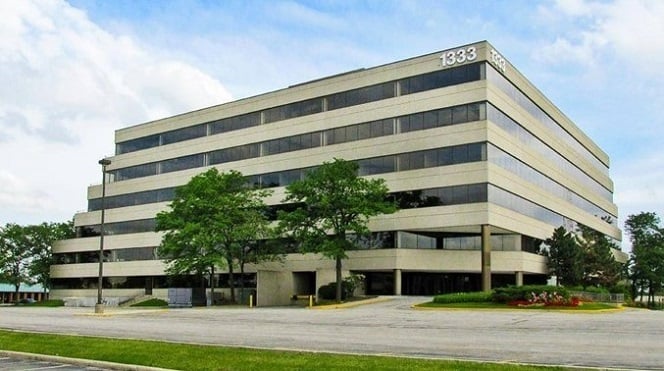
NEW YORK CITY—For a canary-in-a-coalmine predictor of where we are in the real estate cycle, it's hard to do much better than looking at hiring patterns within the industry. Specifically, says SelectLeaders, look at hiring in property and asset management: when more than 25% of openings are in these areas and acquisitions and development positions drop below 10%, it's a sign that the pace is starting to falter. That in a nutshell is what the real estate sector experienced during the third quarter.
“Real estate asset prices have surpassed their prior 2007 highs, and employers are pulling back on growth-oriented hiring and instead building out their property and asset management capacity,” says Dr. David Funk, chief economist at SelectLeaders, which powers the GlobeSt.com Career Center. “Our Employment Cycle model is not yet predicting a correction, and cautious optimism could continue to rule the day, but clearly there is a move to property management and corporate real estate hiring.” SelectLeaders developed the Employment Cycle model as a gauge of where we are in the cycle based on hiring patterns.
Adds Susan Phillips, CEO of SelectLeaders, “Employers and candidates share an attitude of hunkering down and managing their existing jobs and existing portfolio to maximize value. The stability in the economy and market is in drastic contrast to the real and potential disasters witnessed in Q3. Everyone who can is staying still.”
The latest SelectLeaders Job Barometer shows that the slight decline in real estate hiring during Q3 wasn't as pronounced as what the overall job market experienced in the same period, and certain areas of the country are hiring hotbeds. Weather events in Texas and Florida resulted in real estate hiring spikes in those regions along with unexpected consequences elsewhere in the country.
“Manufactured housing plants as far north as Ohio and Indiana, for instance, have so many homes heading to Texas and Florida that their new order delivery dates are now as much as three months out,” says Funk. He adds that an already strained construction labor market is now a red-hot sellers' market.
A gauge of competition in real estate hiring tracked by the Job Barometer is how picky job seekers are during their search. At the previous cyclical peak in 2006, nearly 50 real estate professionals would view a job opportunity for every one application. At present, that ratio is around 30 to one. Both figures are in contrast to 2013, when neither the capital markets nor commercial real estate had fully recovered from the Global Financial Crisis, an application occurred after 10 professionals had clicked on a job.
“The talent pipeline into commercial real estate simply isn't that large, and we have experienced seven years of constant CRE job growth that absorbed the real estate professionals displaced by the global financial crisis with relatively few new entrants,” Funk says. Accordingly, says Phillips, “We are seeing job seekers being very selective in where they apply today.”
Applications to commercial real estate openings beginning in 2015 have fallen to near-lows last seen in '07. SelectLeaders says the demand-supply gap in commercial real estate means good news for job seekers and an increasingly heated battle for talent among CRE employers. Click here for the latest Job Barometer.

“Real estate asset prices have surpassed their prior 2007 highs, and employers are pulling back on growth-oriented hiring and instead building out their property and asset management capacity,” says Dr. David Funk, chief economist at SelectLeaders, which powers the GlobeSt.com Career Center. “Our Employment Cycle model is not yet predicting a correction, and cautious optimism could continue to rule the day, but clearly there is a move to property management and corporate real estate hiring.” SelectLeaders developed the Employment Cycle model as a gauge of where we are in the cycle based on hiring patterns.
Adds Susan Phillips, CEO of SelectLeaders, “Employers and candidates share an attitude of hunkering down and managing their existing jobs and existing portfolio to maximize value. The stability in the economy and market is in drastic contrast to the real and potential disasters witnessed in Q3. Everyone who can is staying still.”
The latest SelectLeaders Job Barometer shows that the slight decline in real estate hiring during Q3 wasn't as pronounced as what the overall job market experienced in the same period, and certain areas of the country are hiring hotbeds. Weather events in Texas and Florida resulted in real estate hiring spikes in those regions along with unexpected consequences elsewhere in the country.
“Manufactured housing plants as far north as Ohio and Indiana, for instance, have so many homes heading to Texas and Florida that their new order delivery dates are now as much as three months out,” says Funk. He adds that an already strained construction labor market is now a red-hot sellers' market.
A gauge of competition in real estate hiring tracked by the Job Barometer is how picky job seekers are during their search. At the previous cyclical peak in 2006, nearly 50 real estate professionals would view a job opportunity for every one application. At present, that ratio is around 30 to one. Both figures are in contrast to 2013, when neither the capital markets nor commercial real estate had fully recovered from the Global Financial Crisis, an application occurred after 10 professionals had clicked on a job.
“The talent pipeline into commercial real estate simply isn't that large, and we have experienced seven years of constant CRE job growth that absorbed the real estate professionals displaced by the global financial crisis with relatively few new entrants,” Funk says. Accordingly, says Phillips, “We are seeing job seekers being very selective in where they apply today.”
Applications to commercial real estate openings beginning in 2015 have fallen to near-lows last seen in '07. SelectLeaders says the demand-supply gap in commercial real estate means good news for job seekers and an increasingly heated battle for talent among CRE employers. Click here for the latest Job Barometer.
Want to continue reading?
Become a Free ALM Digital Reader.
Once you are an ALM Digital Member, you’ll receive:
- Breaking commercial real estate news and analysis, on-site and via our newsletters and custom alerts
- Educational webcasts, white papers, and ebooks from industry thought leaders
- Critical coverage of the property casualty insurance and financial advisory markets on our other ALM sites, PropertyCasualty360 and ThinkAdvisor
Already have an account? Sign In Now
*May exclude premium content© 2025 ALM Global, LLC, All Rights Reserved. Request academic re-use from www.copyright.com. All other uses, submit a request to [email protected]. For more information visit Asset & Logo Licensing.








